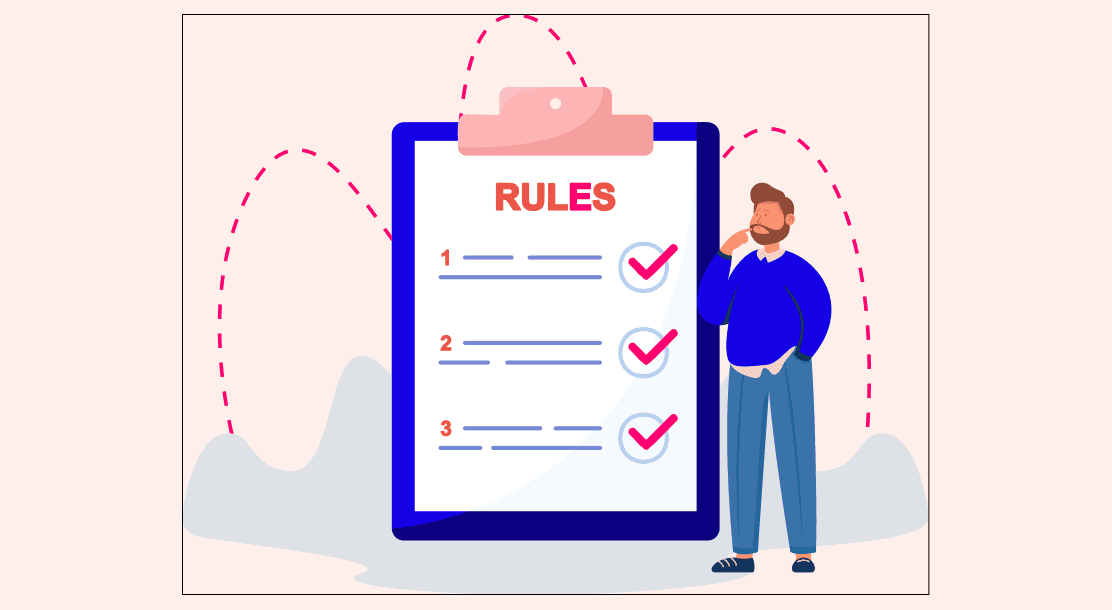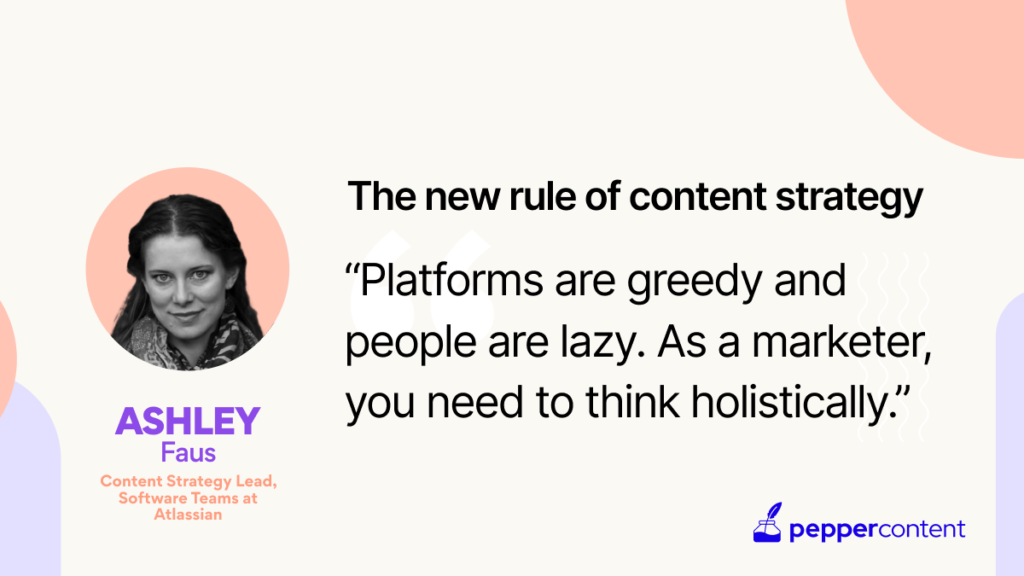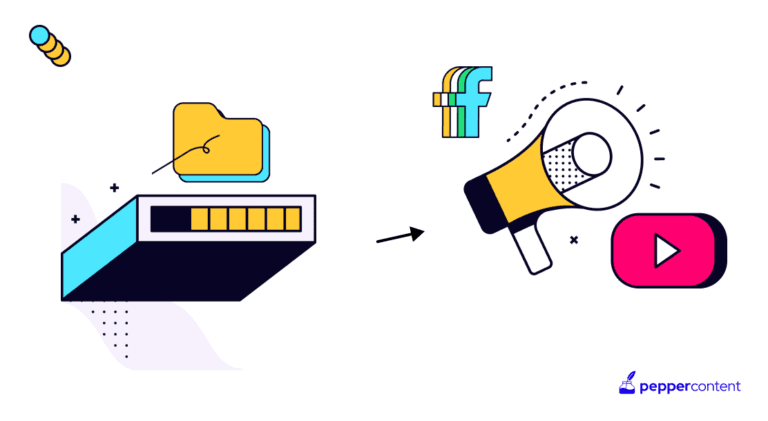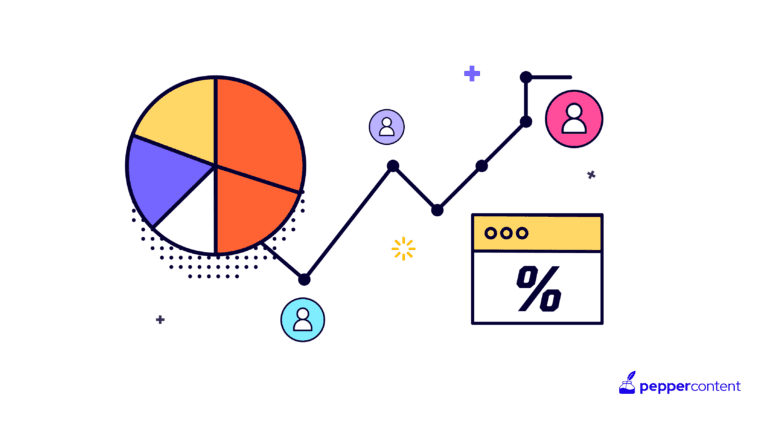8 Content Strategy Rules: A Glimpse Into The Future

The Linear Funnel has three stages—awareness, consideration, and decision. That means, to sell our product or service, we have to start right at the bottom and begin making our target audience aware of it. However, what if the audience is already aware of it? What if they are engaging with us because they are already at a decision-making stage? We may lose them if we still continue trying to sell them our product. And this is bad news for your business.
As marketers, we need to design our content like a playground. We must meet our audience where they are. That’s why the linear funnel doesn’t work anymore.
Ashley Faus, Content Strategy Lead, Software Teams at Atlassian, talks about the rules guiding content strategy into the future. She says, “Treat the buyer’s journey like a playground: People can enter and exit as they desire, they can go in any order, and they can engage with the content the ‘wrong’ way.”

8 Rules That Encompass Content Strategy
1. Content depth
Now that we have understood that mapping content linearly is not a good idea, we must start mapping it by its depth.
● Conceptual: This is the content that is theoretical and philosophical. It focuses on the “what” and the “why” of the idea. This will help your audience think about and frame the problem space.
● Strategic: Here, we want to focus on the process, tools, and key knowledge components that must be included to make the conceptual ideas a reality. Here, we are helping our audience frame the solution space and think about the criteria they need to evaluate a solution. We want to equip them to do their own research.
● Tactical: This includes the prescriptive, step-by-step instructions and specific exercises needed to help the audience achieve the conceptual and strategic ideas.

2. Distribution framework
Next, we need to think about content distribution in a holistic manner.
● Asset type: There are various types of assets – written, visual, audio/or interactive content. Furthermore, you can also divide it into long-form, short-form, and live vs. recorded. You can belong to a team that works only on one specific kind of content. But as a marketer, it’s important to think holistically about the different asset types for your business.
● Channel/platform: We also have a mix of paid, owned, and earned channels. This also includes different platforms – some of which are a place to host content, while others are a place to share content.
● Metrics: These consist of reach, engagement, and CTR. All assets and channels do not need to accomplish everything. Ensure that you’re matching the right metric to the right channel and asset type.
3. Content pairing
It’s imperative for every brand and creator to have a mix of conceptual, strategic, and tactical level content, put across different platforms, using different asset types. One needs to understand which piece of content performs well on which platform. If you ace the content pairing, you have arrived!
4. Republishing content
While it’s important to use our content correctly on different platforms, it’s also essential to use it wisely. Instead of creating new content every day, start repurposing the existing content.
● Pair the problem and solution: Frame the problem on one site and link it to a piece that details the solution on another site.
● Case studies and/or research: Frame the problem—what it is and why it matters on one site. Then, link it to the solution. Or, you could talk about the case study summary and link it to the details.
● Republish existing content: Take existing long-form content and republish it on another site, with a call-out and link redirecting viewers to the original piece of content.
5. Social content
Social content has changed as well.
● Integrate online and offline content: If your potential users see similar content, all of which links to one underlying theme, it helps them understand your product better. Even in physical events, it’s important to integrate your message with what is going up on your business’s social media profile. Unite your message across all channels—email, social media, offline marketing, etc.
● LinkedIn: LinkedIn company pages and organic reach are continuing to decline. One thing that works is posting content from personal profiles. Just ensure that the post has a personal opinion and mentions your company. Remember that anything that takes you immediately off the site decreases your post’s reach.
6. Measure everything
Every metric is relevant for marketing.
● Video: YouTube views and subscriber growth, entrances and referral growth
● Brand paid search: Paid content that is focused on brand keywords, like product names
● Organic traffic: Traditional website traffic metrics for all owned properties
● Social unpaid metrics: Follower growth, in-feed engagement, and referral traffic to all owned channels
7. The ideal customer journey
The ideal customer journey used to be about rushing people to purchase in as few touch-points as possible. But today, it is about the most seamless handoff between touch-points for your audience.
8. Tenets of building a playground
We have successfully established that we need to design our content like a playground.
● Delight your audience: Focus on creating quality content that engages the audience at each touch-point.
● Build the relationship: The long-term affinity for the brand is more important than driving a transactional landing page conversion.
● Influence at every touch-point: All content can be considered top-of-funnel content. It’s no longer about rushing people to purchase. It’s about educating and empowering for success.
Parting Thoughts
“Marketing is no longer about grabbing attention. It’s all about holding it. Today’s best marketers understand: Marketing isn’t about who arrives. It’s about who stays.” – Jay Acunzo
Content is dynamic. Every marketer needs to stay updated with the guidelines that can drive their content to success and help them achieve their end goal. If you are a marketer, ensure that you follow these simple rules shared by Ashley Faus.
Note: This blog is an excerpt from a session on The New Rules of Content Strategy–A Masterclass by Ashley Faus, Content Strategy Lead, Software Teams at Atlassian. The session was part of Elevate–a global virtual content summit organized by Pepper Content, bringing together industry leaders in content marketing.
Latest Blogs
In this blog, explore the golden rules of using AI marketing tools so you can leverage the benefits to their maximum potential.
In this blog, you’ll learn how to avoid the pitfalls of SEO over-optimization while enhancing your site’s performance.
In this article, we’ll take a look at what AMP is, its advantages and disadvantages, and how it affects SEO.
Get your hands on the latest news!
Similar Posts

Content Marketing
8 mins read
The Ultimate Round-Up of Content Marketing Tips from 2023

Content Marketing
6 mins read
Content Marketing in the Age of Big Data: Leveraging Data for Competitive Advantage

Content Marketing
6 mins read